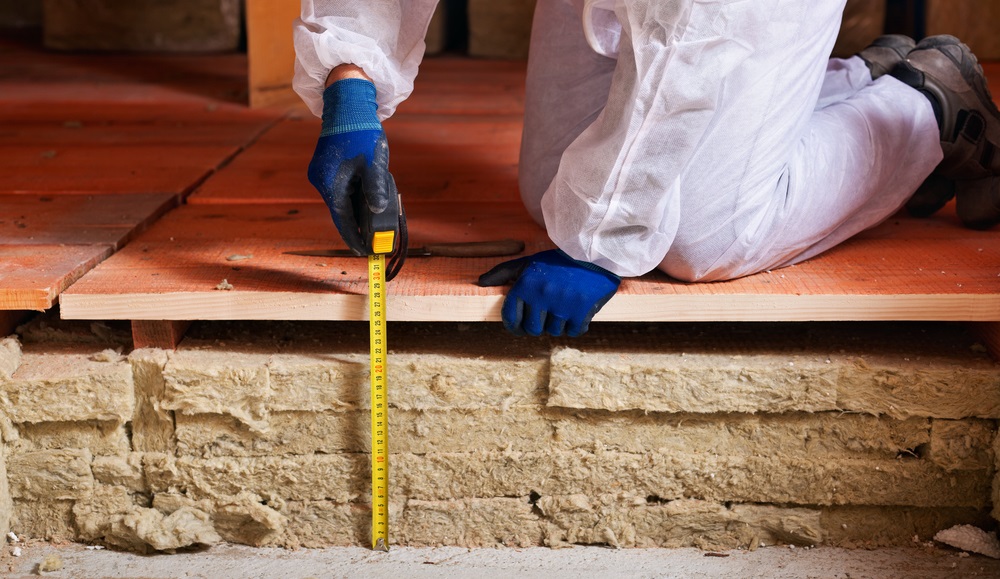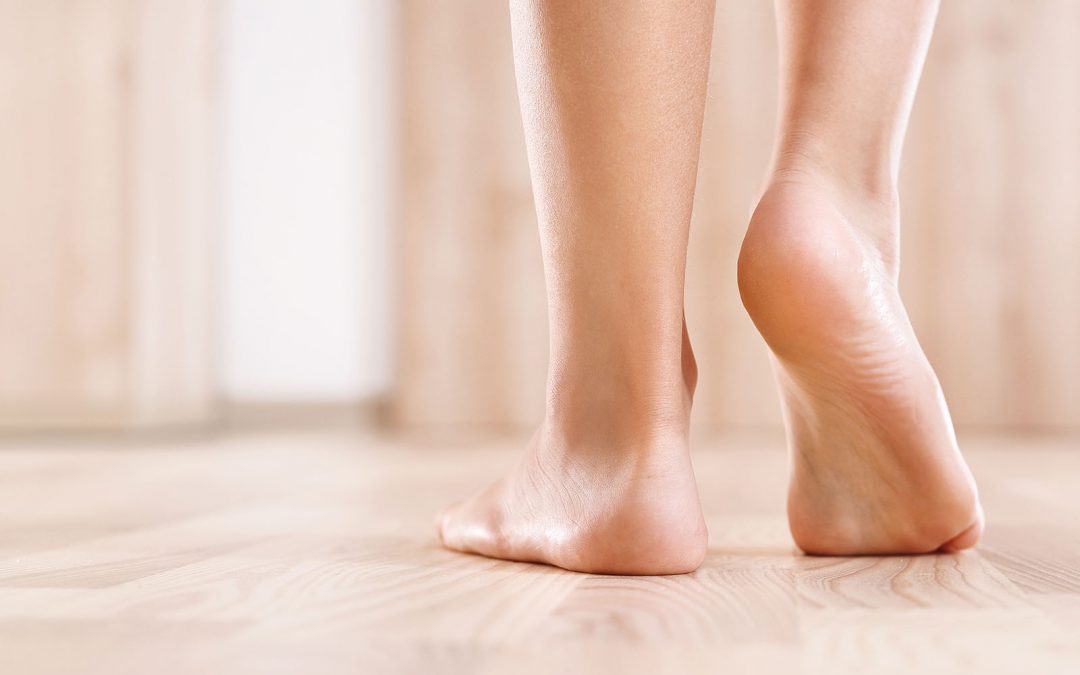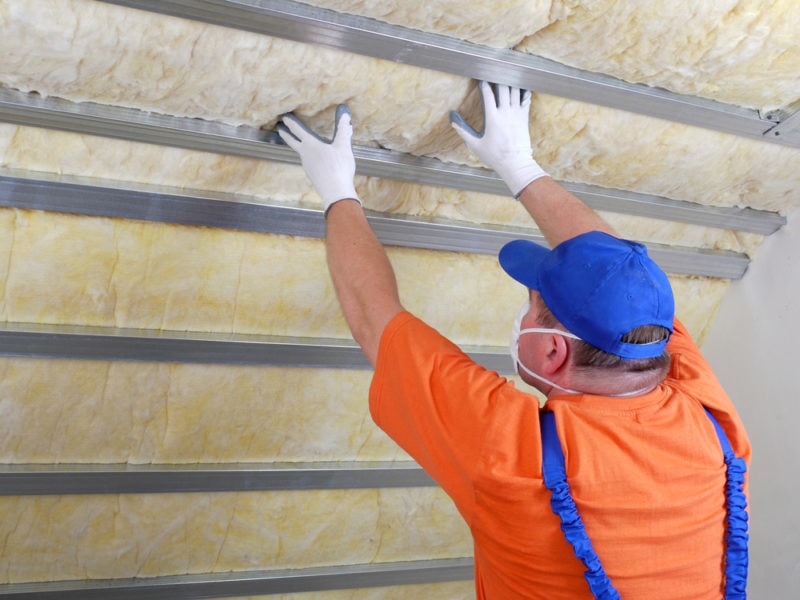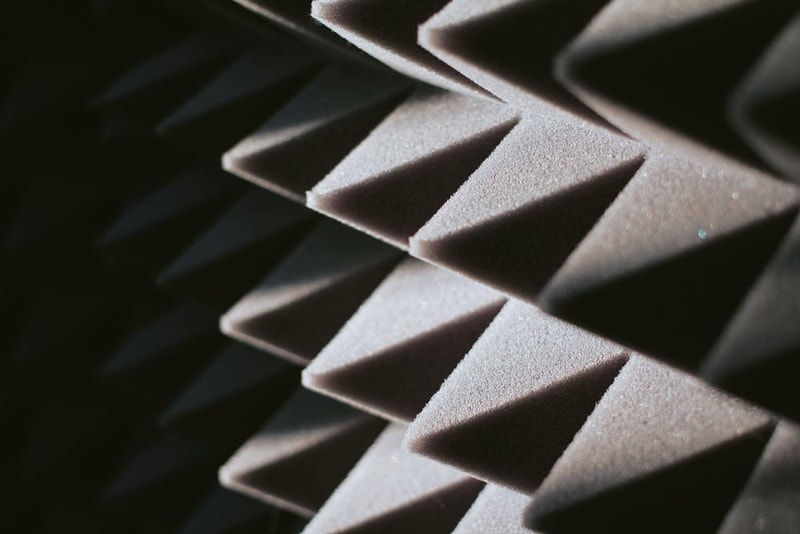
When people think of insulating their home, they often start out by thinking about the outer walls, siding and the attic, however important, those are not the only places that can benefit from being insulated. Another place you can save money by insulating is the floor. It’s easy to forget about but important to do nonetheless. It’s often one of the places where the construction contractor may have been a little skimpy and not ensuring that proper building code was followed if the building specifications didn’t specify it. Annoyingly, you’ll find your HVAC unit working so much harder to compensate for it.
This is especially a costly mistake for homes that don’t have basements, and something you should have fixed as soon as possible. You can also add insulation even if you have a basement, but the likelihood that there’s a costly draft costing you a lot of money is bigger when there’s no basement.
Insulating your floor can keep you from losing up to 20% of the heating or cooling in your house. Take a look at these 18 things you need to know about floor insulation options.
1. Makes You Warmer, just not your feet

Remember that your no matter your choice, that it is something that is a barrier between different temperatures than something that generates warmth. So while it keeps your home warmer, it doesn’t always make your floor feel warmer to the touch. It really depends on the current situation. The temperature of the flooring may be slightly affected by the draft, so it could have a smaller effect, although the type of flooring you have may simply naturally have a cold feel to it. The insulation won’t change the naturally cool feeling of different types of material.
2. Get rid of the Drafts Underneath the House
When the home is raised above the soil level, a space is created where drafts can travel unhindered. The insulation will ensure that that is no longer the case. There simply won’t be the same gap that is unprotected with the introduction of insulation.
3. Check the R Type rating
Floor insulation is rated with an “R Type”. The R Type is a standardized rating that is determined by the thermal barrier it represents. The higher the R Type the more it insulates. For more information see energy star guidelines for full requirements.
4. There are Two Types Of Insulation
There are two main types of floor insulation. Under floor insulates between an unheated lower space and the room above. Above floor insulation is placed between the subfloor and the actual flooring that is put into the room. You will also need to find the type of insulation that works best given the specific design of your home.
5. Install a Vapor Barrier
Your insulation must incorporate a vapor barrier of thin plastic to help prevent moisture from getting into the flooring from below, and in places like the kitchen or bathroom from the moisture getting through the floor to the insulation below. Moisture can ruin the insulation by compromising it, and insulation can cause moisture to be retained and cause wood rot. Moisture is also the reason why you get roof vents installed on the roof to ensure that excess heat and moisture have places to escape through.
6. Concrete Slabs Are Different
If you are thinking about basements and concrete flooring the thermal loss is mainly on the edges of the slab and not through the bottom. It is often much more useful to insulate the edges of the concrete slab. Concrete insulation is normally placed within the concrete itself for maximum effect.
7. Heated Flooring Needs Help
If you have a heated floor it has to be insulated so the heat created radiates into the room and not into other spaces or down into the ground. If you don’t you are losing money each time you turn it on.
8. Below Floor Options
Rolls and Bats: This type of insulation is what most people think of when thinking about insulation. It comes in large rolls, often with a paper backing. Rolled insulation is one of the worst type to use on your floor. The difficulty with rolled insulation is keeping it in place without compromising the insulation itself. Gravity always wins in the end and the insulation falls away from the floor, even if just slightly. Once this occurs the insulation is worthless. Your rolled insulation must fill the entire space.
Loose fill: Loose fill insulation is blown into place and fills the area. This requires something to retain the loose fill insulation in place. Either boards or plastic sheeting must be put under the floor joists to retain the loosely blown insulation in place. This type of insulation works better, although with settling an inevitable fact it can become compromised over time.
Rigid foam: Rigid foam boards provide good insulation and are able to be worked like other building materials. Normally used in either new construction or renovations, rigid insulation is cut to fit in between the joists of the flooring, and the edges sealed with caulking or spray foam insulation.
Spray Foam: Spray foam insulation is likely the best option for below floor insulation. The most expensive option. It is the longest lasting and the highest R value insulation that can be put into place. Foam in place insulation is sprayed into spaces between the joists and goes around venting, pipes, and electrical work.
9. Above floor options
Cork: If you want to be environmentally friendly, cork is a good option. Cork can be cut into thin pads to go underneath the flooring material. This provides sound, thermal, and impact insulation.
Padding: A thin pad of around 1/8” is often placed below floors to give them some sound insulation and thermal insulation. This pad is put down and then the floor is placed on top of it, this can be used for standard installations and floating floors.
10. No Such Thing As Perfection
Your floor insulation will never be perfect. It is very rare for a floor to be able to reach the highest energy star rating. If you spend $1000 to get $50 off of your heating/cooling bill it will take 20 years to recoup that cost, by which time you will have had to replace it. Make a choice that makes sense in terms of cost to benefit achieved.
11. It can be a DIY job, but likely isn’t

While a skilled DIY person who does a lot of handyman projects might be able to do the work in some parts of the house, it’s likely not the best way to go about the project, and rather getting the help of pros will ensure that it’s done smoothly. While you want the project done, you don’t want to potentially start cutting materials just to realize you just wasted a lot of material, made a bunch of mistakes and will have to redo a large part of the project.
12. It can help Provide an Extra Layer of Protection Against Fires
If a fire is to break out, the additional layer, assuming it is something that is not very flammable, will help keep the flames get to the timber used for the framing, thereby delaying it. The additional barrier will help keep the fire from spreading and giving the firefighters more time put out the fire. We also encourage you to read our guide on fire safety. To obtain the property of it being able to better protect against fires, you will need to choose the right material. For this purpose, sheep’s wool is especially good.
13. Cheaper than Insulating Other Areas

It’s often also cheaper than insulating other uninsulated spaces that are currently causing issues with regards to heat loss.
14. Helps Prevent Water Leaks
Insulating the floor helps keep pipes from bursting which in turn helps limit the risk of water leaks that could end up being very costly to repair. If you live in a home with pipes beneath the floor, there’s the risk of the water freezing which can cause the pipes to burst. This is naturally more likely to be a problem in areas that get rough winters. Given their location, they may be difficult to inspect and taking measures to prevent them from freezing is one more thing that you can do to protect your property. The potentially damaging cold air comes from the outside, so by blocking off its access to your pipes will help you lower the risk pipe accidents.
15. Keep Your Home Nice and Cool in the Summer
Besides providing the added protection against bursting pipes, it also helps during the summer. As you probably know, hot air rises and will try to rise through an unprotected floor. When it’s 100 degrees outside, the effects will be felt and you will be experiencing that you can’t have a moment without needing either the fan or HVAC to keep you from overheating.
16. Use it for Sound Protection too

You may be living next to a street with lots of traffic and adding this insulation also helps make sure you’re not as bothered by the noise from that. Of course, the sound will be able to enter the house through any unprotected area, and this is one to be aware of.
17. No Need to Insulate in Between Upper and Living Level
Suspended wooden floors are really the ones where it’s the most important that you insulate. Insulating between the different levels in your home doesn’t change too much since there won’t be a draught there given that there’s no external access.
18. Be Careful When Someone Suggests Using Fiberglass Batt Insulation
Fiberglass batt is generally not the best option to go with for this type of home protection. There are better alternatives and as mentioned, sheep’s wool is a good alternative. When fiberglass batt is installed, there are certain common problems that seem to consistently be the case with this type of material. Either it may end up falling down and out of place, it’s not actually in touch with the subfloor where it’s the intention to provide insulation for, or it ends up being compressed during the process of the installation. If it falls out of place, you can understand why it’s no longer effective at what it’s intended for, and it’s a common type of problem that will often happen over time.
If the fiberglass doesn’t get the necessary support it might end up in the second situation where it’s not in contact with the subfloor. It can happen gradually over time too. To provide the maximal amount of insulation, it needs to be in contact with the subfloor and stay there, which requires the support to be correct and sufficient.
When the material is compressed into space, it’s the result of incorrectly cut pieces and while it may be the least problematic of the 3 situations, it’s still a problem to watch out for which will impact the R-value.
Are you ready to have your floor insulated, and have you found the contractor to help you with the job yet?